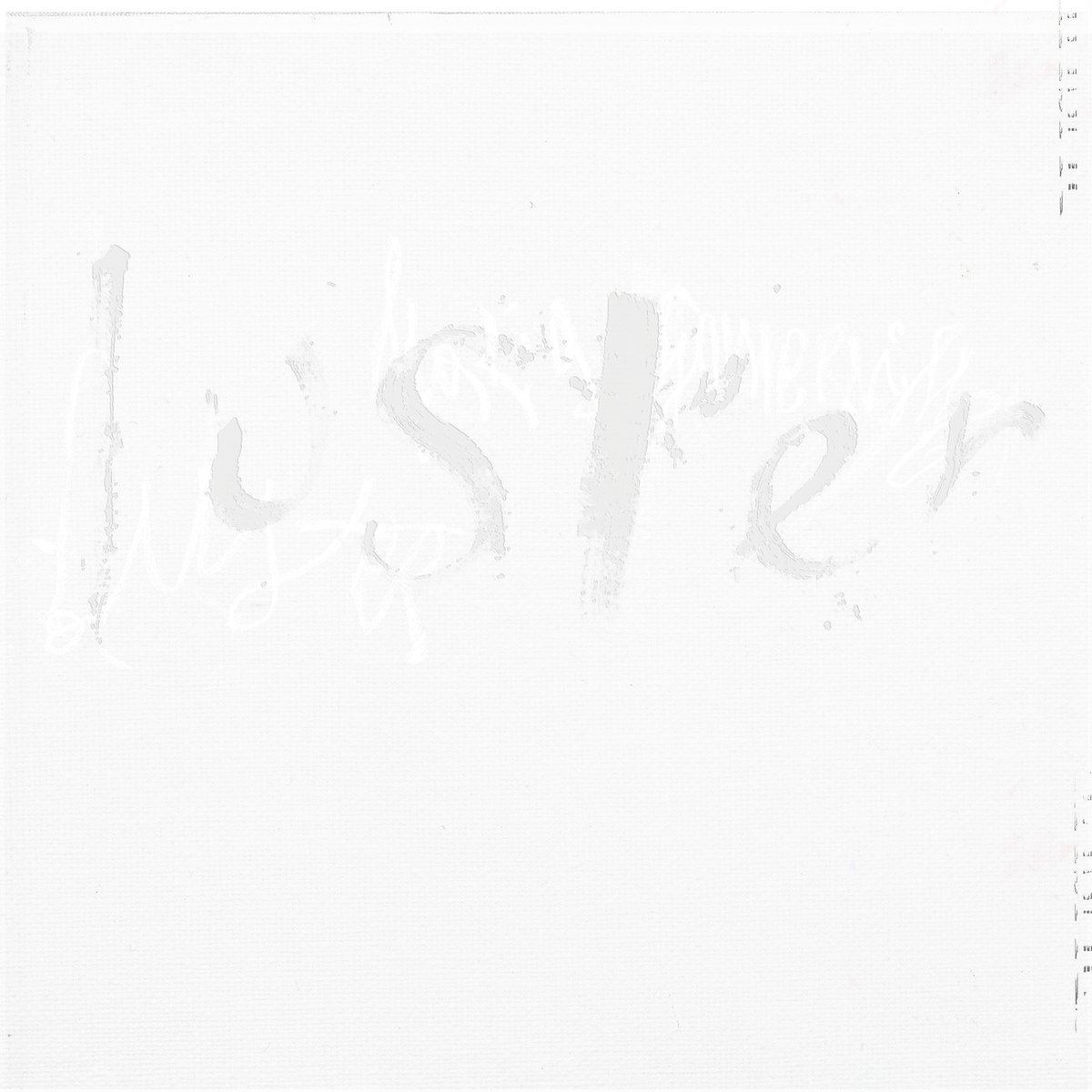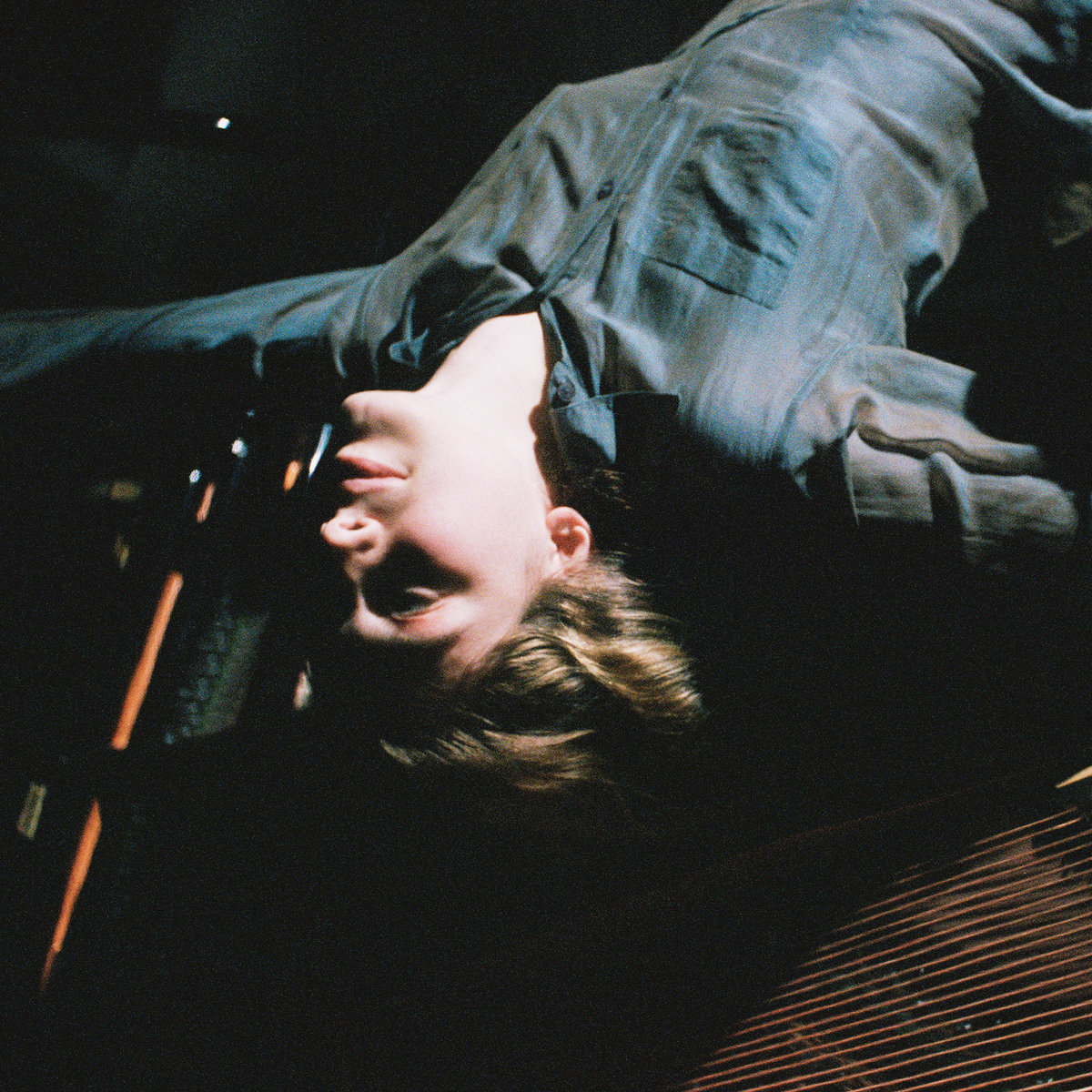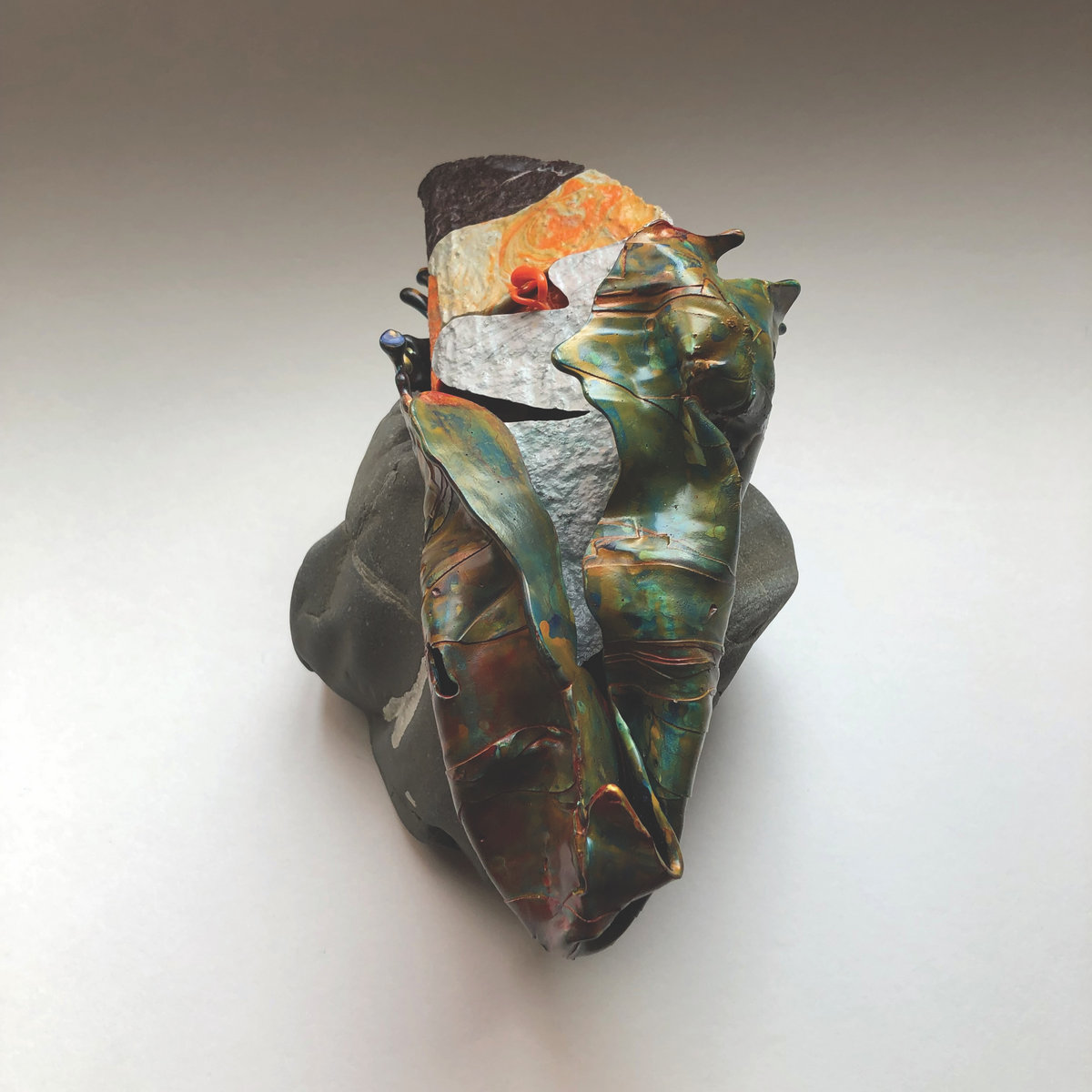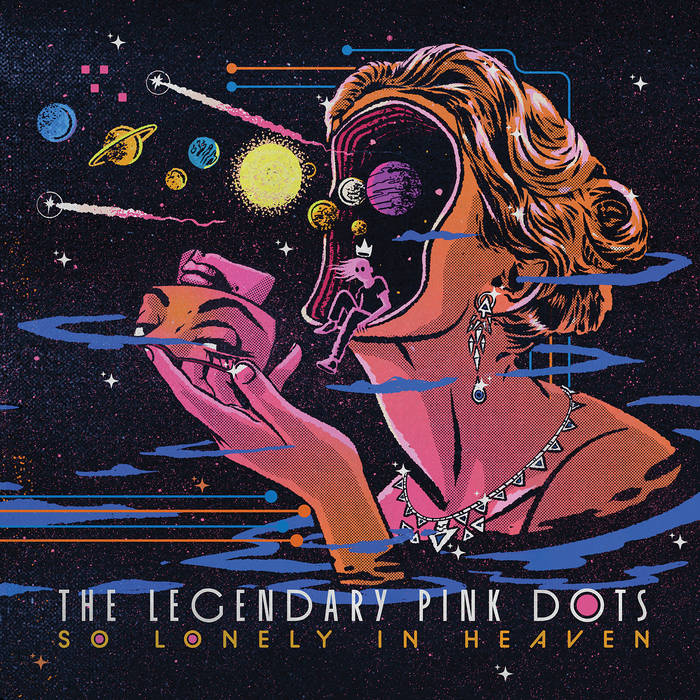Podcast Episodes 744 & 745 are live

A weekend episode plus a bonus.
Episode 744 features new stuff from The Bug, Softcult, Sally Anne Morgan, Matt McBane, Eliana Glass, Thank You Lord For Satan, JakoJako, Anla Courtis ja Lehtisalo, Asher, Quade, Marina Zispin, Nazar, and Erik Klinga, plus a vault reissue by Bag People.
We're calling Episode 745 a "bonus" episode because it has awesome new music but from acts & albums we've already heard from recently: Dead Pioneers, Maria Somerville, Mess Esque, Thalia Zedek Band, Velvet, Grails, Disiniblud (Rachika Nayar & Nina Keith), New Candys, Eli Winter, Angel Bat Dawid & Naima Nefertari, Dummy, Joseph Allred, loscil, and HTRK
Maisie the dog is from Perth, Western Australia is keeping an eye on us! Photo sent from Tim.
Get involved: subscribe, review, rate, share with your friends, send images!















Read more …



 This release is (correctly) billed as the debut solo album from this Polish composer & multi-instrumentalist, but Markowska previously surfaced back in 2024 with a similarly fine EP (Thrills) and has recorded music for various art installations and soundtracks over the years. Given that this is a Miasmah release, the prevailing mood is often a bit of a dark and wintry one, but Markowska’s vision is otherwise quite distinct from most of her labelmates. While the main thread here can be roughly classified as “haunted Eastern European folk music,” Markowska’s darker “early music” inspirations are nicely balanced by ambient warmth, avant-garde techniques, and admirably exacting attention to the more subtle pleasures of texture and sound design.
This release is (correctly) billed as the debut solo album from this Polish composer & multi-instrumentalist, but Markowska previously surfaced back in 2024 with a similarly fine EP (Thrills) and has recorded music for various art installations and soundtracks over the years. Given that this is a Miasmah release, the prevailing mood is often a bit of a dark and wintry one, but Markowska’s vision is otherwise quite distinct from most of her labelmates. While the main thread here can be roughly classified as “haunted Eastern European folk music,” Markowska’s darker “early music” inspirations are nicely balanced by ambient warmth, avant-garde techniques, and admirably exacting attention to the more subtle pleasures of texture and sound design.  It took six years, but Maria Somerville is finally back with another album, her first for the iconic 4AD. That is certainly a fitting home for Somerville, as Luster’s best moments favorably recall the label’s Ivo Watts-Russell golden age. In fact, the album description specifically (and aptly) invokes the lush romanticism of Ivo’s own shapeshifting This Mortal Coil project as a key reference point, but the resemblance is not exactly a stylistic one. Instead, Luster feels more like the kind of album that would have resulted if Julee Cruise had been backed by a revolving cast of ringers from classic 4AD acts like Cocteau Twins. I suppose Somerville’s greatest song (2019’s “Dreaming”) already evoked 4AD luminaries Tarnation quite beautifully, but Luster is considerably more “dreampop” in focus than its illustrious predecessor All My People.
It took six years, but Maria Somerville is finally back with another album, her first for the iconic 4AD. That is certainly a fitting home for Somerville, as Luster’s best moments favorably recall the label’s Ivo Watts-Russell golden age. In fact, the album description specifically (and aptly) invokes the lush romanticism of Ivo’s own shapeshifting This Mortal Coil project as a key reference point, but the resemblance is not exactly a stylistic one. Instead, Luster feels more like the kind of album that would have resulted if Julee Cruise had been backed by a revolving cast of ringers from classic 4AD acts like Cocteau Twins. I suppose Somerville’s greatest song (2019’s “Dreaming”) already evoked 4AD luminaries Tarnation quite beautifully, but Luster is considerably more “dreampop” in focus than its illustrious predecessor All My People. This is both the inaugural release for Becker’s Clunk label and his first new album in nearly a decade, but it stylistically picks up roughly where his brilliantly demented Traditional Music of Notional Species series left off (grotesquely gnarled and squirming synth hallucinations beamed in from an alien jungle). Intended as a “labyrinthine four-chapter pseudo-musical that reflects the flustering absurdity of the current era,” The Incident feels like the fruit of a Lovecraftian scenario in which Becker is plagued by recurring nightmares of an otherworldly city populated by slime-covered and tentacled horrors and wakes up each morning with a fresh batch of disturbing field recordings documenting his extradimensional travels.
This is both the inaugural release for Becker’s Clunk label and his first new album in nearly a decade, but it stylistically picks up roughly where his brilliantly demented Traditional Music of Notional Species series left off (grotesquely gnarled and squirming synth hallucinations beamed in from an alien jungle). Intended as a “labyrinthine four-chapter pseudo-musical that reflects the flustering absurdity of the current era,” The Incident feels like the fruit of a Lovecraftian scenario in which Becker is plagued by recurring nightmares of an otherworldly city populated by slime-covered and tentacled horrors and wakes up each morning with a fresh batch of disturbing field recordings documenting his extradimensional travels.  On its face, this smoldering debut from NYC-based jazz chanteuse Eliana Glass seems like quite an inspired outlier for the historically avant garde-minded Shelter Press, as the smoky, sensuous minimalism of these depressive torch songs resembles absolutely nothing else previously released on the label. I certainly cannot fault their instincts, however, as the allure of E is immediately obvious from the first notes. To my ears, these darkly beautiful piano and voice performances evoke the chills-down-my-spine intensity of the late, great Patty Waters (minus the more harrowing and extreme bits), but Glass’s vision was more explicitly inspired by Carla Bley, Annette Peacock, and Ethiopian nun Emahoy Tsegué-Maryam Guèbrou (all of whom are covered here).
On its face, this smoldering debut from NYC-based jazz chanteuse Eliana Glass seems like quite an inspired outlier for the historically avant garde-minded Shelter Press, as the smoky, sensuous minimalism of these depressive torch songs resembles absolutely nothing else previously released on the label. I certainly cannot fault their instincts, however, as the allure of E is immediately obvious from the first notes. To my ears, these darkly beautiful piano and voice performances evoke the chills-down-my-spine intensity of the late, great Patty Waters (minus the more harrowing and extreme bits), but Glass’s vision was more explicitly inspired by Carla Bley, Annette Peacock, and Ethiopian nun Emahoy Tsegué-Maryam Guèbrou (all of whom are covered here). This latest release from Emily Cross’s long-running solo project is an absolute stunner that beautifully marries the intensity of prime Nina Nastasia with art-damaged slowcore melancholy and further ices that wonderful cake with viscerally wild eruptions of experimentalism. Fittingly, the album’s backstory is similarly colorful and compelling, as Cross has been working as a death doula in Dorset, England (her usual collaborator/Loma bandmate Dan Duszynski remains back in Texas) and a label interested in the album’s demos encouraged her to “push her imagination to the limits.”
This latest release from Emily Cross’s long-running solo project is an absolute stunner that beautifully marries the intensity of prime Nina Nastasia with art-damaged slowcore melancholy and further ices that wonderful cake with viscerally wild eruptions of experimentalism. Fittingly, the album’s backstory is similarly colorful and compelling, as Cross has been working as a death doula in Dorset, England (her usual collaborator/Loma bandmate Dan Duszynski remains back in Texas) and a label interested in the album’s demos encouraged her to “push her imagination to the limits.”  This collaboration between Seth Horvitz’s Rrose alter ego & the Munich-based Lindsey Wang is a marriage made in heaven, as Wang’s dancefloor-driven beat mastery brings a sensuous physicality to Rrose’s lysergic forays into psychoacoustic phenomena. While I am quite fond of the opening “Ellipses,” it is almost instantly eclipsed by the three-song run of sleekly futuristic mindbombs that begins with “Stretcher,” which has the feel of an out-of-control train barreling through a series of violent electromagnetic squalls.
This collaboration between Seth Horvitz’s Rrose alter ego & the Munich-based Lindsey Wang is a marriage made in heaven, as Wang’s dancefloor-driven beat mastery brings a sensuous physicality to Rrose’s lysergic forays into psychoacoustic phenomena. While I am quite fond of the opening “Ellipses,” it is almost instantly eclipsed by the three-song run of sleekly futuristic mindbombs that begins with “Stretcher,” which has the feel of an out-of-control train barreling through a series of violent electromagnetic squalls.  This aptly named second album from Loraine James’ more ambient/impressionistic side is a bit warmer and less beat-driven than its predecessor, resembling an unearthed classic from the late ‘90s/early 2000s golden age of glitch-worshipping innovators like Oval and Jim O’Rourke and their more melody-centered peers like Telefon Tel Aviv. Fittingly, Josh Eustis was again involved on the mastering end, but there are also some interesting ironies as well, as these pieces are all named after rather chilly temperatures and James’ throwback to the early days of the laptop IDM era is actually deliberately hardware-focused.
This aptly named second album from Loraine James’ more ambient/impressionistic side is a bit warmer and less beat-driven than its predecessor, resembling an unearthed classic from the late ‘90s/early 2000s golden age of glitch-worshipping innovators like Oval and Jim O’Rourke and their more melody-centered peers like Telefon Tel Aviv. Fittingly, Josh Eustis was again involved on the mastering end, but there are also some interesting ironies as well, as these pieces are all named after rather chilly temperatures and James’ throwback to the early days of the laptop IDM era is actually deliberately hardware-focused. This sixth album from Chicago’s finest Factory Records-inspired post-punk trio features a significantly altered line-up, as founding member Jonathan van Herik is back in the fold once again (replacing long-time bassist Alianna Kalaba). On paper, that means that FACS now shares exactly the same line-up as the late, great Disappears, but with a bit of a fresh twist, as van Herik has now switched to guitar and frontman Brian Case has switched to bass. Notably, Wish Defense was also Steve Albini’s engineering swan song, which is fitting given that this album absolutely rules.
This sixth album from Chicago’s finest Factory Records-inspired post-punk trio features a significantly altered line-up, as founding member Jonathan van Herik is back in the fold once again (replacing long-time bassist Alianna Kalaba). On paper, that means that FACS now shares exactly the same line-up as the late, great Disappears, but with a bit of a fresh twist, as van Herik has now switched to guitar and frontman Brian Case has switched to bass. Notably, Wish Defense was also Steve Albini’s engineering swan song, which is fitting given that this album absolutely rules.
 On A Clearing, Berlin based Sarah Saviet (violin), and Joseph Houston (piano) superbly exemplify how much can be done artistically with very little. Consisting of five pieces of widely varying duration and, as best as I can tell, one take recordings without processing or further treatment, there is a multitude of sounds and textures to be had, emanating from just two instruments.
On A Clearing, Berlin based Sarah Saviet (violin), and Joseph Houston (piano) superbly exemplify how much can be done artistically with very little. Consisting of five pieces of widely varying duration and, as best as I can tell, one take recordings without processing or further treatment, there is a multitude of sounds and textures to be had, emanating from just two instruments. Expanding upon the themes of place and space that has shaped his recent solo works, Mark Solotroff's latest record unsurprisingly features heavy use of his trademark analog synths. What changes, however, is the actual inclusion of sonic spaces: environmental recordings captured from his current hometown of Chicago, as well as travels in Milan and Venice. The intersection of these spatial recordings and electronic instrumentation gives In Search of Total Placelessness a different feel than his other recent works but sits beautifully alongside them.
Expanding upon the themes of place and space that has shaped his recent solo works, Mark Solotroff's latest record unsurprisingly features heavy use of his trademark analog synths. What changes, however, is the actual inclusion of sonic spaces: environmental recordings captured from his current hometown of Chicago, as well as travels in Milan and Venice. The intersection of these spatial recordings and electronic instrumentation gives In Search of Total Placelessness a different feel than his other recent works but sits beautifully alongside them.